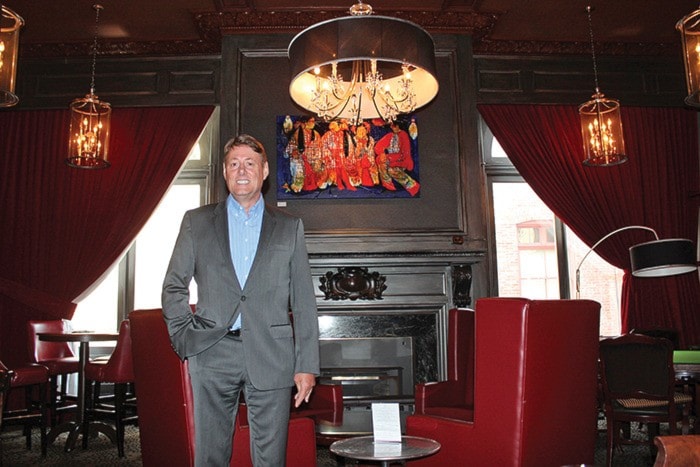It’s an exciting feeling walking into the Union Club of B.C.’s historic building on the corner of Humboldt and Gordon streets.
From the outside, its beige columns and brick exterior stand tall, while its high arched windows offer a glimpse into life as a member of the club.
Inside, it’s like stepping back into the early 1900s. Green curtains line the grand windows, matching the green couches and the red, green and floral carpet. Mahogany panelling line the entrance to one of the many rooms in the 15,000-square-foot building.
Local artists’ work can also be found hanging in the walls of many of the rooms.
Now, the club’s building has gained national historic site status.
The Union Club of B.C. was founded in 1879 by Sir Matthew Ballie Begbie in opposition to a movement for Vancouver Island to separate from British Columbia. Originally the club was located above a butcher shop at the corner of Government and Yates streets, and was an all-male club for businessmen, professionals, judiciary, government bureaucrats and newspaper owners.
After eventually outgrowing the building, architect Loring P. Rixford of San Francisco was commissioned as to create a beaux arts Italian Renaissance-style building for the club. Construction began in March 1911 and was complete in December 1912, at a cost of roughly $51,000, including furnishings.
Today, the more than 100-year-old building has become like a second home to many of its roughly 2,400 club members. It offers a place to dine, read, watch TV, exercise, play pool or host a party for its male and female members from all walks of life, including academics, professional trades, teachers, protective services, government employees and politicians.
“When you look at the history of the union club, it played a very significant role in shaping Vancouver Island. Today we’re very much a part of the community,” said club president Bernard Beck, adding the club is partnered with organizations such as Pacific Opera, the Arts Gallery of Greater Victoria, and the Canadian Institute Council.
The club also contributes to Symphony Splash and the University of Victoria’s scholarship program.
“My family moved here in 2007, we didn’t know anyone. The club was really our starting point in building life-long friendships and becoming a part of the community. Now it’s home,” said Beck, adding his family often heads to the club for dinner.
“I like all aspects of the building. Every area has something special.”
Recently, the club applied to have the building named a national historic site by Parks Canada. The program recognizes nationally signficant places, persons and events in Canadian history.
In late July, after a lengthy process, the building, the outside of which was remediated recently, was granted the new status.
“We were ecstatic. It’s wonderful for the club and for the City of Victoria,” Beck said.
According to the Parks Canada website, there are close to 3,500 designations across the country, 24 sites of which are in Victoria, including Emily Car House, Craigflower Manor House, St. Andrew’s Roman Catholic Cathedral, the Empress Hotel, Point Ellice House and Craigdarroch Castle.
